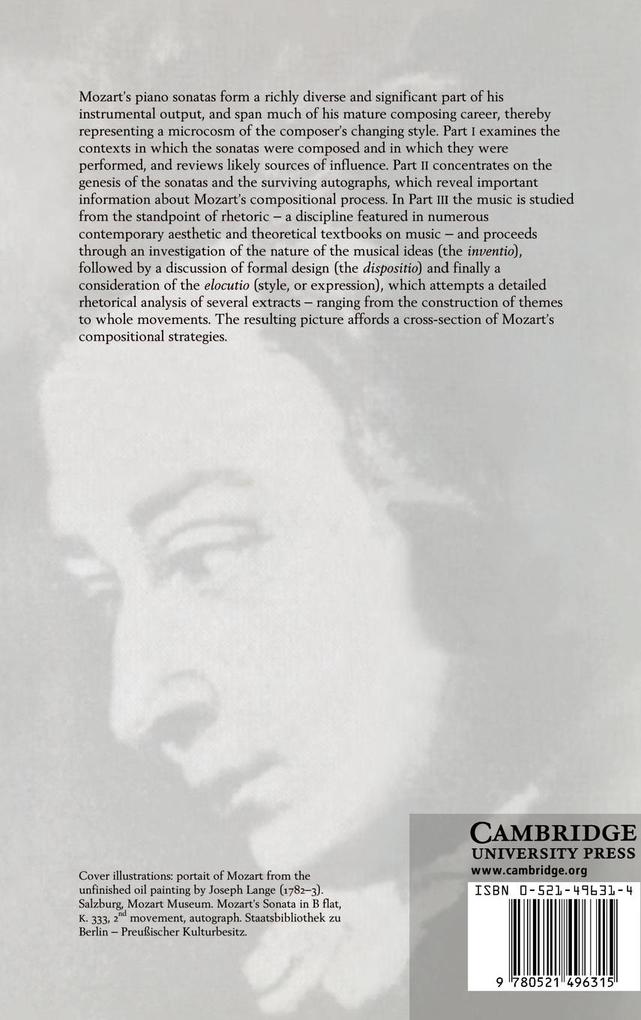Mozart's piano sonatas form a richly diverse and significant part of his instrumental output, and span much of his mature composing career, thereby representing a microcosm of the composer's changing style. Part I examines the contexts in which the sonatas were composed and in which they were performed, and reviews likely sources of influence. Part II concentrates on the genesis of the sonatas and the surviving autographs, which reveal important information about Mozart's compositional process. In Part III the music is studied from the standpoint of rhetoric - a discipline featured in numerous contemporary aesthetic and theoretical textbooks on music - and proceeds through an investigation of the nature of the musical ideas (the inventio), followed by a discussion of formal design (the dispositio) and finally a consideration of the elocutio (style, or expression), which attempts a detailed rhetorical analysis of several extracts - ranging from the construction of themes to whole movements. The resulting picture affords a cross-section of Mozart's compositional strategies.
Inhaltsverzeichnis
Preface; Acknowledgements; Abbreviations; Part I. Contexts: 1. The solo sonata in context; 2. Stylistic models for Mozart's sonatas; Part II. Sources: 3 Six sonatas, K.279-84; 4. Three sonatas, K.309-11; 5. Four sonatas, K.330-2, K.333; 6. Fantasia and Sonata in C minor, K.475 and 457; 7. Later Viennese sonatas: K.533 and 494, K.545, K.570, K.576; 8. Fragments: Part III. Style: 9. Eighteenth-century views of sonata form; 10. Pre-compositional choices - the rhetorical inventio; 11. Dispositio: rhetoric and design; 12. The rhetorical elocutio; Notes, Select bibliography; Index.














